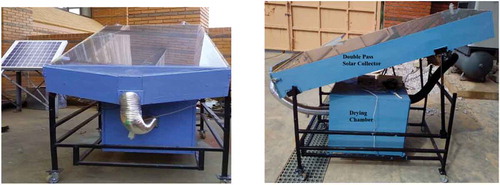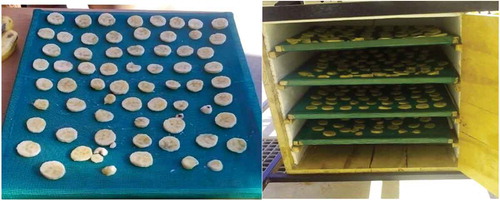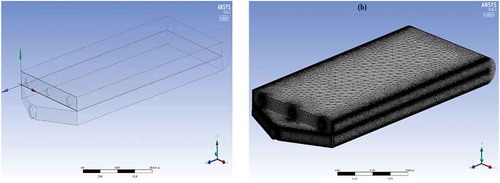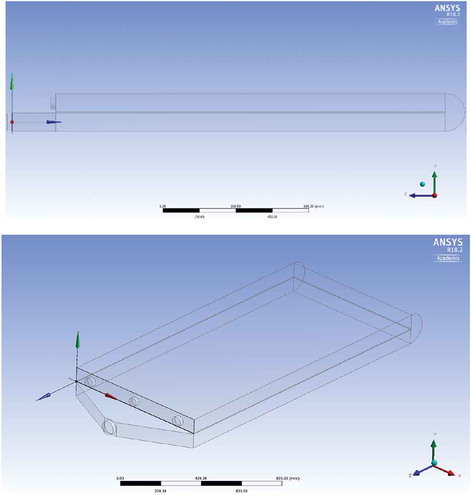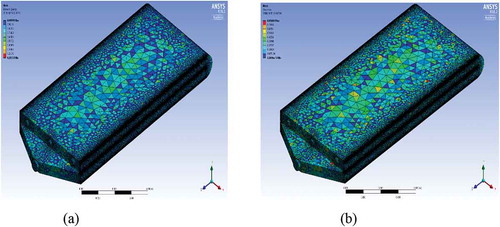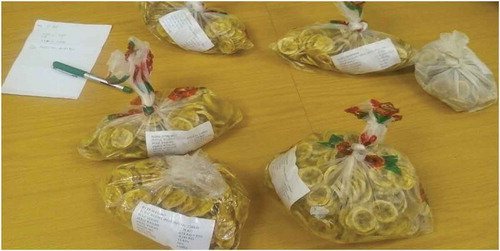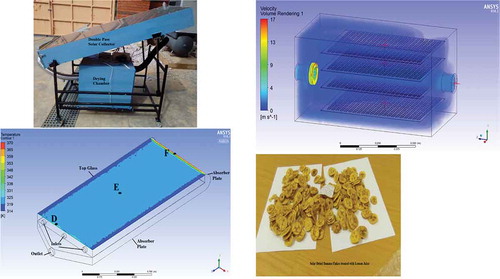Figures & data
Figure 3. An outlay of developed banana solar dryer: 1. Top glass, 2. Bottom glass, 3. Absorber plate, 4. Air gap, 5. Insulators, 6. Fan, 7. Tray, 8. Aluminum pipe, 9. Outlet, 10.
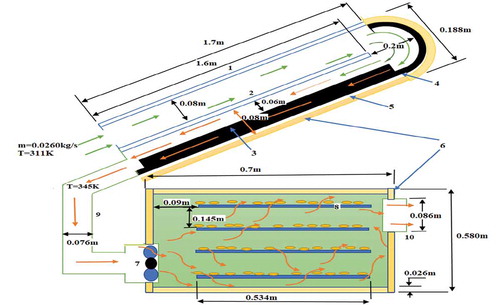
Table 1. Properties and mesh metric parameters of a DPSC and drying chamber
Figure 8. Different meshing techniques of the double-pass solar collector (a) Body meshing (b) Fine mesh on corners, curves, rounds and edges of the solar collectors.
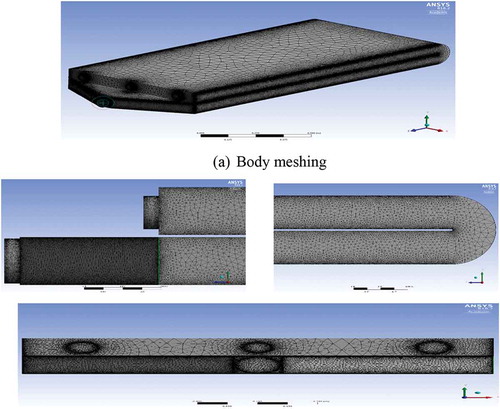
Table 2. Some input parameters for the solar collector simulation
Table 3. Convergence criteria of the collector CFD simulation
Figure 11. (a) Effect of mass flow rate on collector efficiency. (b) Percentage of useful heat gained.

Figure 12. (a). Temperature pattern on the absorber plate surface. (b). Temperature pattern on the top glass.
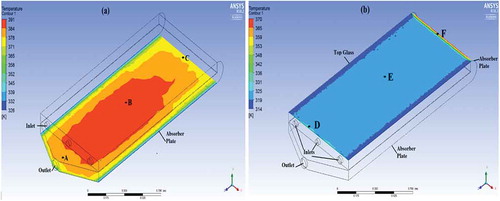
Table 4. Comparative temperature distributions on absorber plate and top glass from the CFD modeling and experiment results
Figure 13. Comparison of experimental and simulation values of Nusselt numbers under different Reynolds values.

Table


